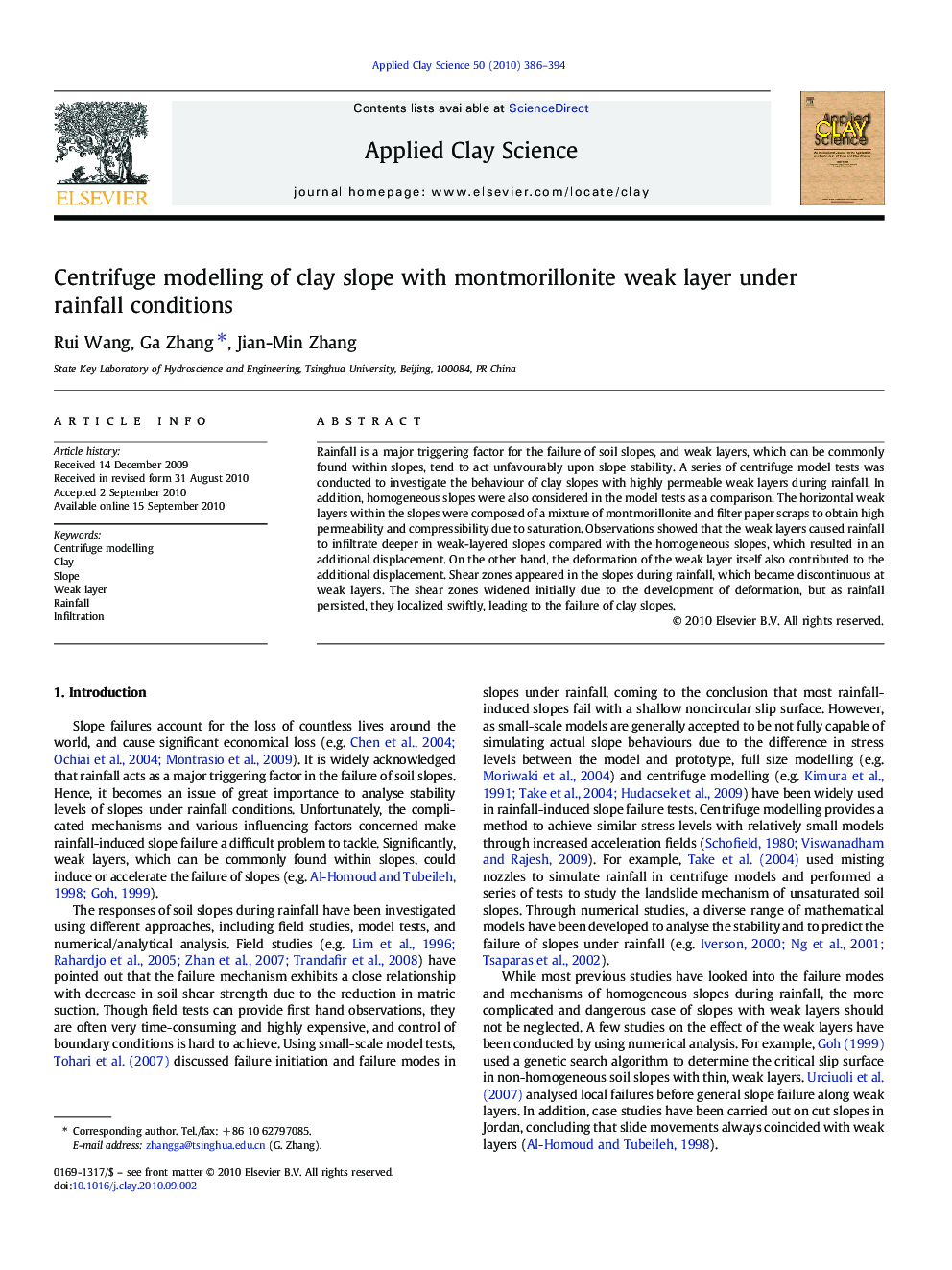| Article ID | Journal | Published Year | Pages | File Type |
|---|---|---|---|---|
| 1695684 | Applied Clay Science | 2010 | 9 Pages |
Rainfall is a major triggering factor for the failure of soil slopes, and weak layers, which can be commonly found within slopes, tend to act unfavourably upon slope stability. A series of centrifuge model tests was conducted to investigate the behaviour of clay slopes with highly permeable weak layers during rainfall. In addition, homogeneous slopes were also considered in the model tests as a comparison. The horizontal weak layers within the slopes were composed of a mixture of montmorillonite and filter paper scraps to obtain high permeability and compressibility due to saturation. Observations showed that the weak layers caused rainfall to infiltrate deeper in weak-layered slopes compared with the homogeneous slopes, which resulted in an additional displacement. On the other hand, the deformation of the weak layer itself also contributed to the additional displacement. Shear zones appeared in the slopes during rainfall, which became discontinuous at weak layers. The shear zones widened initially due to the development of deformation, but as rainfall persisted, they localized swiftly, leading to the failure of clay slopes.
Research Highlights► Centrifuge model tests of soil slopes with high permeable weak layer under rainfall. ► Strain analysis-based method to determine wetting front in slope during rainfall. ► Weak layer induces additional displacement with two different mechanisms. ► Rainfall led to a shear zone with discontinuity at weak layers.
